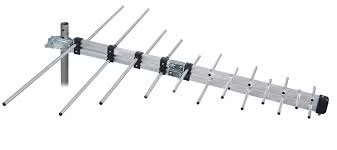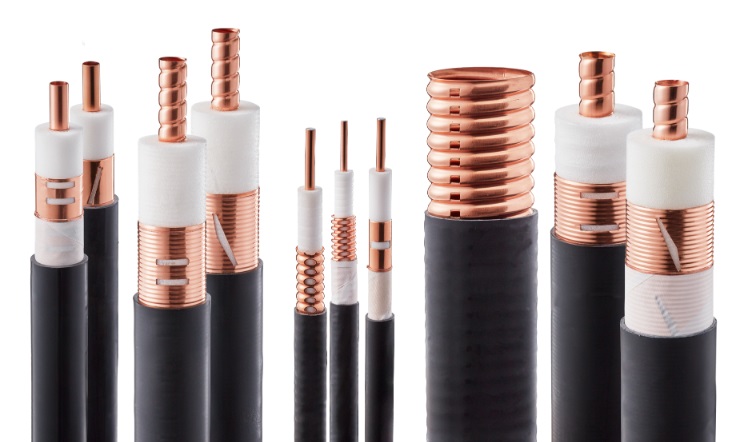The Yagi antenna, often referred to as the Yagi-Uda antenna, is a popular choice for applications requiring focused and directional signal transmission or reception. Known for its high gain, simplicity, and effectiveness, this antenna type has become a staple in telecommunications, broadcasting, and amateur radio. Understanding its design, functionality, and applications highlights its importance in modern communication systems.
What is a Yagi Antenna?
A Yagi antenna is a type of directional antenna that consists of multiple parallel elements arranged along a single axis. These elements include a driven element, a reflector, and one or more directors. Named after its inventors, Hidetsugu Yagi and Shintaro Uda, the Yagi-Uda antenna is designed to focus radio frequency (RF) energy in a specific direction, resulting in high gain and reduced interference from other directions.
The driven element, usually a dipole, receives or transmits the RF signal. The reflector, positioned behind the driven element, prevents signal radiation in the opposite direction, enhancing forward gain. The directors, placed in front of the driven element, further concentrate the signal into a narrow beam, improving its directional properties.
Key Features of a Yagi Antenna
High Gain
The directional Yagi antenna offers high gain, meaning it can transmit or receive signals over long distances. This makes it an excellent choice for applications where a strong and focused signal is required.
Directionality
The Yagi antenna’s ability to focus signals in a specific direction reduces interference from unwanted signals. This feature enhances communication quality, especially in crowded RF environments.
Simplicity and Cost-Effectiveness
Despite its high performance, the Yagi antenna is simple in design and relatively easy to construct. Its affordability makes it accessible for both professional and amateur use.
Frequency Range
The Yagi antenna can operate across various frequency bands, including VHF, UHF, and even higher frequencies. Its adaptability allows it to be used in diverse applications, from television broadcasting to wireless communication.
Applications of Yagi Antennas
Television Broadcasting
The Yagi antenna has long been used for television reception, particularly in rural areas. Its high gain and directionality allow it to capture signals from distant broadcast towers, providing clear and reliable reception.
Wireless Communication
In wireless communication systems, the Yagi antenna is often used for point-to-point communication. Its ability to focus signals in a specific direction ensures strong and reliable connectivity, even over long distances.
Amateur Radio
Amateur radio enthusiasts frequently use Yagi antennas for long-distance communication. The Yagi-Uda antenna’s high gain and directional properties make it ideal for contacting distant stations, even under challenging conditions.
Satellite Communication
Yagi antennas are also used in satellite communication, where precise directionality is crucial. Their ability to focus signals ensures efficient communication with orbiting satellites.
Industrial and Commercial Applications
Industries and businesses use Yagi antennas for various purposes, including telemetry, remote monitoring, and control systems. The directional Yagi antenna ensures reliable data transmission in these applications.
Advantages of Yagi Antennas
High Efficiency
The Yagi antenna’s design allows for efficient signal transmission and reception. Its high gain ensures minimal energy loss, making it a reliable choice for long-distance communication.
Compact Design
Despite its performance, the Yagi antenna is relatively compact, making it easy to install and maintain. Its lightweight structure allows for mounting on poles, towers, or buildings without significant structural requirements.
Cost-Effectiveness
The Yagi antenna’s simplicity and affordability make it a cost-effective solution for many applications. It provides excellent performance at a fraction of the cost of more complex antenna systems.
Customizability
Yagi antennas can be customized to suit specific frequency ranges and gain requirements. Adjusting the number and length of the directors, as well as the spacing between elements, allows users to tailor the antenna to their needs.
How to Choose the Right Yagi Antenna
Frequency Range
Ensure that the antenna is designed to operate within the desired frequency range. Different applications may require specific frequency capabilities, so selecting the appropriate model is crucial.
Gain and Beamwidth
Consider the antenna’s gain and beamwidth. Higher gain provides better long-distance performance, while narrower beamwidth offers improved directionality. Assess your requirements to find the right balance.
Build Quality
Look for an antenna made from durable materials, especially for outdoor installations. Weather-resistant construction ensures long-term performance and reliability.
Installation Requirements
Evaluate the installation environment and ensure that the antenna can be mounted securely. Consider factors such as wind resistance, height, and alignment during installation.
Installation Tips for Yagi Antennas
Proper Alignment
Align the antenna correctly to point toward the signal source. Use a compass or signal strength meter for precise positioning.
Secure Mounting
Ensure that the antenna is securely mounted to withstand environmental factors such as wind and rain. Use appropriate mounting brackets and hardware for stability.
Cable Quality
Use high-quality coaxial cables to connect the antenna to the equipment. Poor-quality cables can result in signal loss and reduced performance.
Regular Maintenance
Inspect the antenna periodically for signs of wear or damage. Cleaning and maintaining the antenna ensures consistent performance over time.
Conclusion
The Yagi antenna, or Yagi-Uda antenna, remains a vital tool in RF communication. Its high gain, directionality, and versatility make it suitable for a wide range of applications, from television broadcasting to satellite communication. The directional Yagi antenna stands out for its ability to focus signals, ensuring reliable and efficient communication in demanding environments. By understanding its features and choosing the right model for your needs, you can harness the full potential of this powerful antenna.




